Hi everyone! I thought I might go totally insane and try reviewing every YGO set and card one by one. But since that's a little bit TOO crazy, I figure I'll look at sets in a larger fashion and then zoom in on cards I like. I'll try to go through sets in OCG Order, since I'm not as familiar with them and want to see the cards as they truly come out. We start with the creatively named OCG Vol. 1, a set that came out on February 4th, 1999. And as the first set, it's... enormously boring, actually!
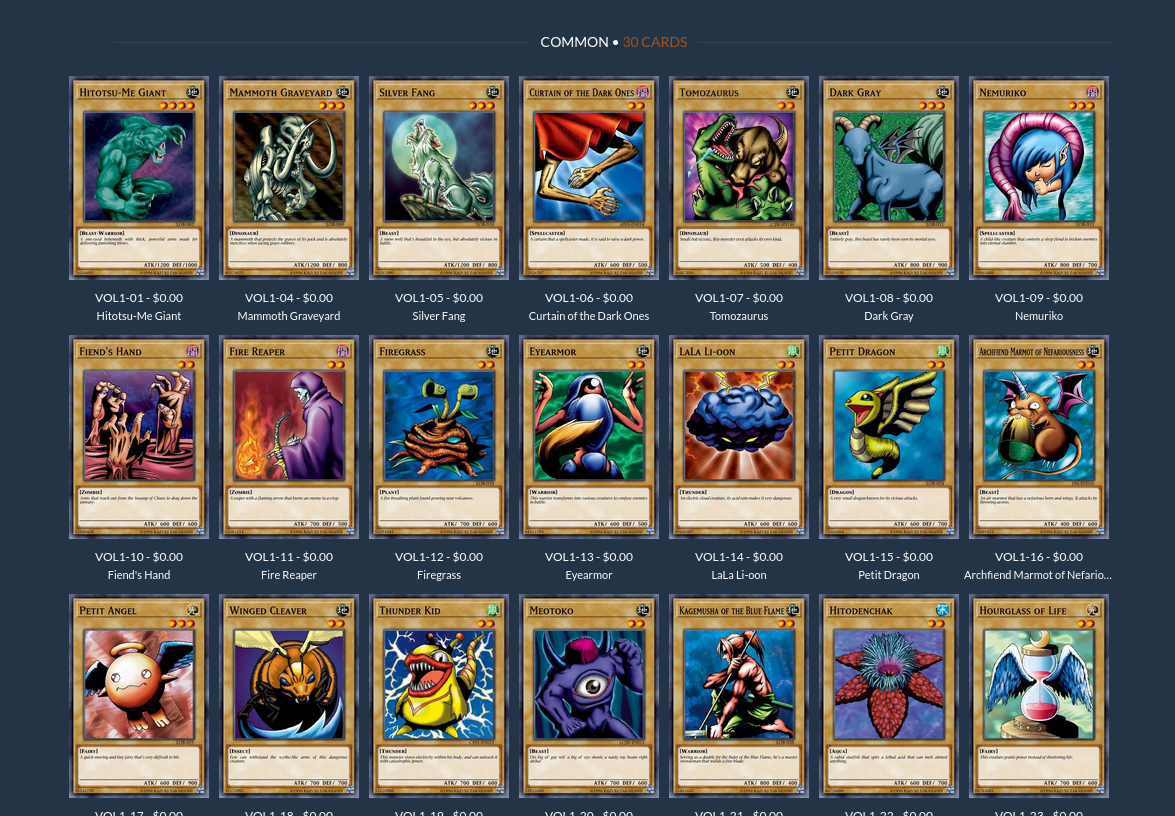
My main basis for comparison regarding the design of TCGs at their beginning is MtG, and even if we were to take the TCG compilation set Legend of Blue-Eyes White Dragon instead of these early OCG boosters, YGO is notable for how aggressively its early packs are slanted towards Normal Monsters. And the thing about Normal Monsters is... they're just not very interesting! MtG, of course, has vanillas all the time, but there's more room to keep them differentiated from each other because mana means they come out at different times, and color separates what decks can actually play them. Yet I suppose early on in MtG's life these connections that made decks actually a thing were not very strong either, and it took years for them to start mattering. It doesn't change the fact that looking at early YGO sets can make you really struggle to find interesting gameplay options.
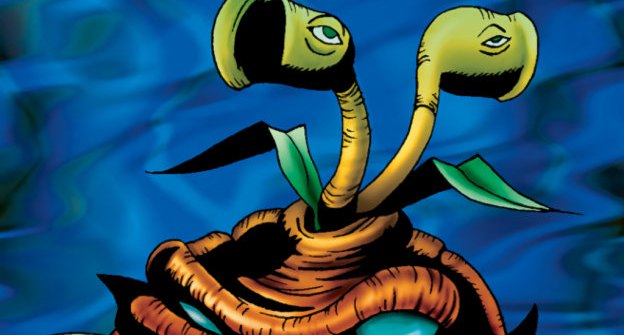
I do kind of get what they were going for though - they simultaneously wanted to show monsters from the manga for us to play, to give us a selection of interesting designs and concepts, and to lay the groundwork for more complex design afterwards. TCGs were still relatively young at the time, and there are many reasons people enjoy them other than their gameplay. As a source of fascinating little creatures, I think the first assortment of monsters pleasantly establishes Yu-Gi-Oh's original aesthetic goals. Ultimately, they're a bunch of strange little guys that look like someone scribbled then in class and then colored them digitally when they got home - and there's a real charm to that we sometimes forget while talking about Halqifibrax combos. Even focusing on the actual game, we see a lot of first ideas in this set - Normal Monsters of varying types, levels, and attributes, some very basic equipment, and interaction.
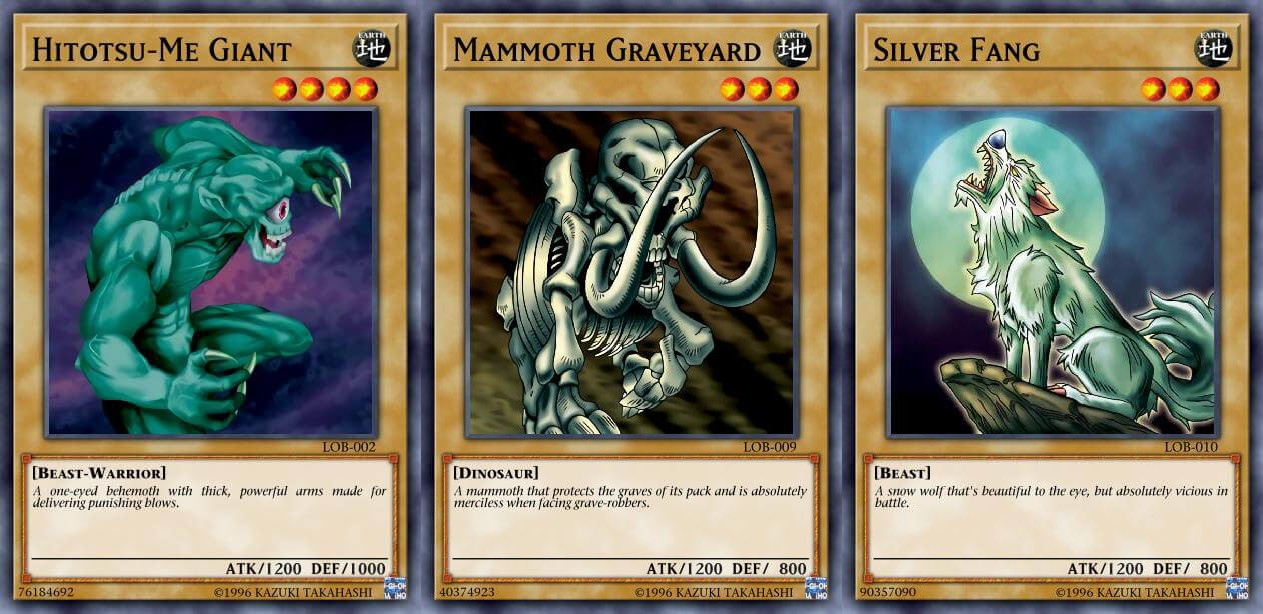
Of particular note is that there's only one Level 4 monster, Cyclops/Hitotsu-me Giant. At 1200 Attack, it ties with its Lv3 partners Silver Fang and Mammoth Graveyard, who all tower above the 500-800 ranges of everything else you can Normal Summon for free. There actually aren't any single tribute monsters in this set at all, with the only big monsters being Yugi's famous "Dark Magician" and "Gaia the Fierce Knight" (Black Magician and Dark Knight Gaia in Japan). Requiring two tributes to bring out, these cards made up for their Summoning difficulty by being twice as strong as the tiny monsters you otherwise have access to... or so they were supposed to.
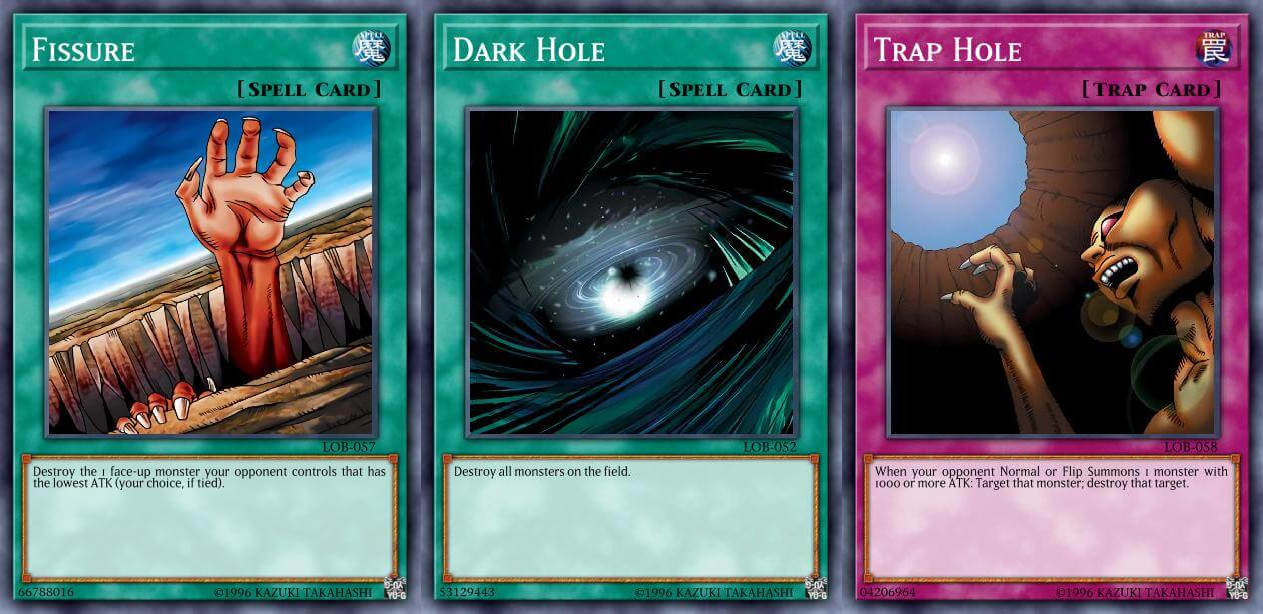
In reality, there's a few cards in this set that made using these Monsters quite risky indeed... Fissure, Dark Hole, and Trap Hole. These 3 comprise the first removal in the game, and they definitely set a basis for comparison. Oddly enough, I wouldn't say they set a base LINE - card games often tend to have really really powerful stuff at the beginning that becomes seen as a staple and then is considered TOO good in later years, leading to tons of card design playing at being ALMOST that one really powerful old card. But they each became cards that defined aspects of the game.
Fissure is the first of a series of Spells that trade one for one with a single monster, and thus enormously powerful in that it could be fired off with no warning. However, it was balanced with a hefty downside - being unable to destroy anything except the weakest monster your opponent controls! This could be useful if your opponent was sitting on something in defense position like a Giant Soldier of Stone, as would become a common tendency in low powered YGO to come, but it was also a huge liability versus a board of multiple monsters. At the same time, the fact that Fissure was ALWAYS potentially in someone's hand meant that Tributing was never really safe. If you had 2 monsters on board and then tributed them for Dark Magician, a single Fissure would mean they traded 1 card for 3 of yours, without evenusing their Normal Summon. This sort of card disadvantage made Tributing seriously tricky to use in YGO's early years, and is part of why it was never a particularly effective strategy in its original form.
The other removal spell also had a downside... sort of. It just so happens, though, that that downside wasn't that much of one compared to the sheer value it could provide. I'm speaking, of course, about Dark Hole. Dark Hole is really a very simple card - it blows up every monster on the field, full stop. Now, you can definitely lose your own monsters to this, but that's relatively unimportant in situations where your opponent is winning and destroyed all of yours. It ALSO grants a somewhat threatening advantage to the player going second, because the first player will usually be ahead on board materiel and thus be more likely to be lose everything from it.
Now, in early formats like this that doesn't really matter as much. You were pretty much mostly summoning single monsters and hoping you could attack over your opponent's, or at least trade. But it makes the chance of tributing even more risky, because not only do you need to get rid of multiple monsters to do it, you also need to create a situation where you have 2 or 3 monsters on board at all. Put 3 monsters on board and your opponent could easily destroy your entire field, leaving you down 2 cards comparatively, while they probably just Summoned a monster and attacked you again afterwards. As such, you pretty much never wanted to play the big overwhelming monsters because more than anything you wanted the ability to consistently summon a 1200 every turn if you could, not to have 2500s rotting in your hand.
Dark Hole is such a powerful card that it's still sometimes played as random deck filler, but the modern game has made its sort of effect a bit less useful. It'd be more correct to say its effect has been put onto cards that also do other things or can be searched or summoned or attack for game, etc. Still, the fact is that cards that do this sort of thing are very common in modern YGO, so its an effect that's been powerful from the start. It's also interesting to see how much more overwhelming this is than a card like Fissure, which can be played around - they still both have "downsides", but Fissure can only ever trade one for one unless your opponent Tributed and made it better, whereas Dark Hole can bring you victory just through letting opponent Summon without over-extending yourself.
The last removal we see in this format is also the very first Trap card, an interesting type designed to allow interaction during the opponent's turn. Trap Hole is a rather jankily written card by modern standards, and not really playable anymore because of how most Normal Summoned monsters are expected to do something immediately as a utility card. But it's certainly still a reasonable effect, and it can get people occasionally even today. It's weird to see Trap Hole in the context of Vol. 1 because its attack stat requirement actually puts a strong wall between the 1200 crew and everything else - you could argue it was motivation to play weaker monsters in a format that otherwise lacked that. Yet I think what Trap Hole did is the same thing all the other removal did - made Tributes even less playable than they already were. Now you didn't just have to fear your opponent getting to blow it up or wipe the board on your turn, your opponent could simply blow Dark Magician up the moment you summoned it. That kinda makes using them a bit less appealing, right?
The most interesting aspect of Trap Hole for me, though, aside from it being able to hit Flip Summons for some reason, is that you had to set it to use it. Now, there's no Spell/Trap removal in this set, but the fact Traps are vulnerable to removal would be a big element of the evolution of the game. Yet it wasn't just a liability either - it created a strange mind-game. Trap Hole was the only trap in Vol. 1, but there were several other cards that could be set as well - this created an awkward situation very similar to dealing with untapped lands in MtG, where you had to play into a bluff a lot of the time and hope for the best. What's interesting here is that later addition of Spell/Trap removal made it actually a real sacrifice to set a card as a bluff and see it destroyed, so there was definitely a sort of meta-game created by allowing this aspect. I don't think it really added all that much, because the safest plays were usually fairly consistent anyway, but it was interesting as a preview of what was to come.
As a small aside, Trap Hole's Japanese name is "Otoshiana", which literally means "drop hole". I think an accurate translation of this card would in fact be "Pitfall". Weirdly, a later archetype would connect cards spelled "hooru" in Japanese with the pitfall series that would be created based on this famous card, meaning that Dark Hole and Trap Hole would end up actually connected in a language where they don't share the same word at all. It's a bit of a weird reversal from the most common scenario, which is an early translation change making the TCG have to belaboredly mention what cards aren't part of archetypes despite seeming like they should be in English.
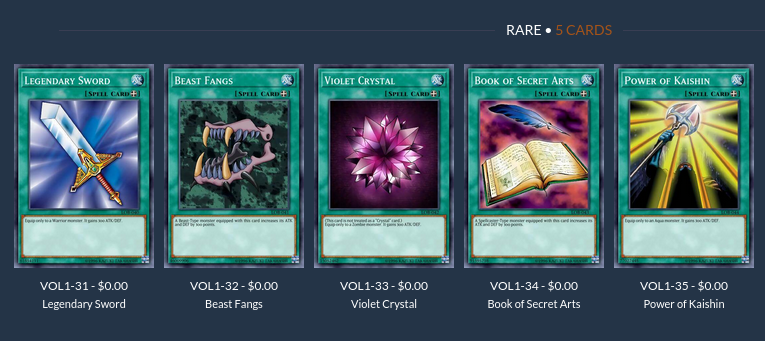
There's some other cards in this set, of course. All of them are similarly, well, dull, but they at least show Konami was trying to figure out what they could pritn that made sense. There's a cycle of "boosting" equip spells for various Monster types, which are trying to create the beginnings of "decks" - but since they're all completely identical boosts of 300 ATK and DEF for specific types of monster, they don't add all that much strategically. There's no reason to value Type A over Type B in this era unless Type B doesn't have a booster at all, and in the end it just means every deck type will play the same way. Interestingly, though, I'd say that this ultimately makes Silver Fang the best monster at this time - because there's no boosters for Dinosaurs and Beast-Warriors, the types of Hitotsu-Me and Mammoth Graveyard. I guess that arguably made Beast Fangs the strongest equip in the game?
The final two cards of the set are Red Medicine and Sparks, a weak healing spell and a VERY weak burn spell. Both of these cards are... quite terrible. Unlike Dark Hole, which was enormously powerful to the point we saw weaker versions of it for a long time, these cards definitely set a baseline that was TOO weak. YGO is a weird realm where the only resources are your Summons, your Life Points, and your Cards, so trying to figure out what exchange rates between what worked well enough to make a game is tricky. You can't really blame them for shooting low. In the end, it's still funny that they're so weak.
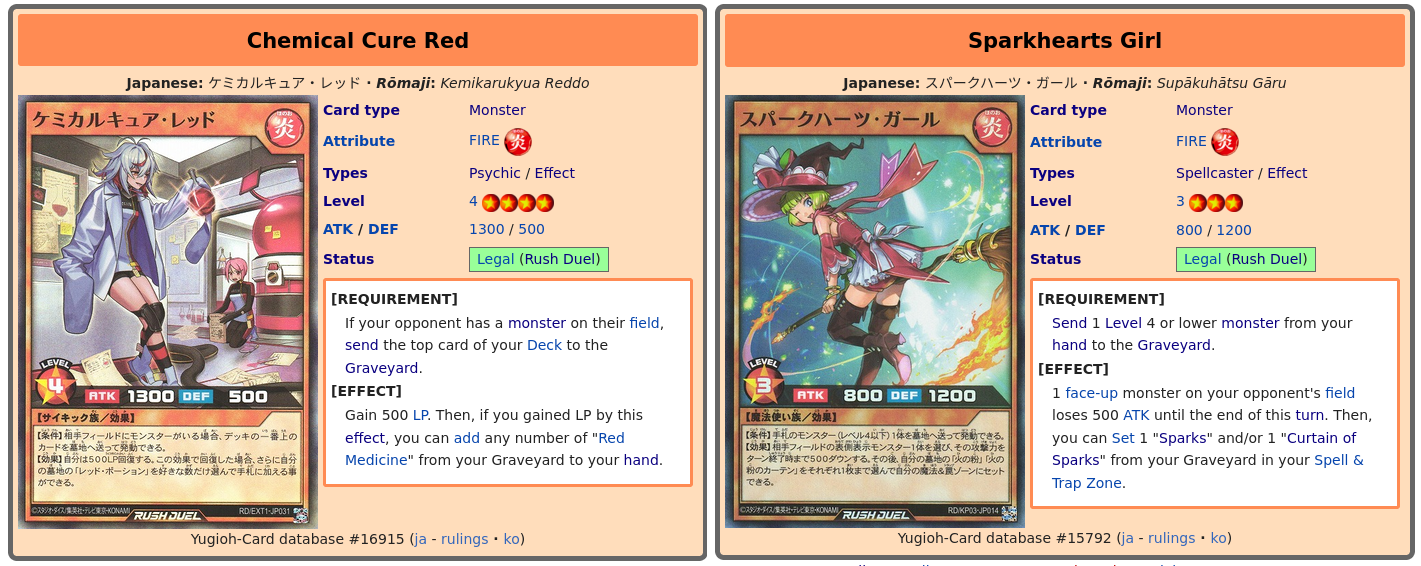
Of particular note to me is that Rush Duels brought both of these cards back, and THEN made support for them, because individual cards being weak is balanced out by the sheer number of them you can get in Rush Duels. I really want to explore their format more because I've had a lot of fun with the Chemical Cure cards that support Medicine decks, and they offer an intriguing new angle on the design philosophy.
So that's Vol. 1, a really quite boring set at the end of the day, but a decent enough microcosm for understanding what exactly YGO WAS. We're going to see a lot of design like this from now on, so I'll be able to discuss things without having to get so in-depth on things like "800 attack Normal Monsters" and the like. Hope you enjoyed!
As for generic thoughts on the Normal Monsters and little translation notes, please check out my Twitter thread on the topic. Thanks for reading!